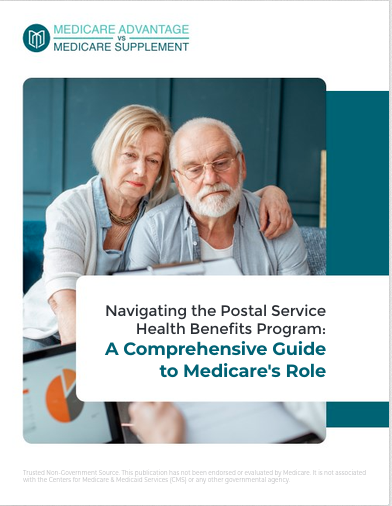Key Takeaways
- Medicare is divided into four parts: A, B, C, and D, each covering different aspects of healthcare costs.
- Understanding these parts helps make informed decisions about healthcare coverage without confusion.
Medicare’s A, B, C, and D Sound Confusing? Here’s the Simple Breakdown You Need
Medicare is the federal health insurance program primarily for individuals aged 65 and older, but its complex structure can leave people confused. The program is broken into four distinct parts, known as Medicare Part A, B, C, and D. Each of these covers different aspects of your healthcare needs, from hospital stays to prescription medications. This guide will help break down what each part covers, how they work, and what you need to know in 2024 to navigate Medicare with confidence.
Medicare Part A: Hospital Insurance
Medicare Part A primarily covers inpatient hospital care, skilled nursing facilities, hospice care, and some home health services. It is often referred to as “hospital insurance” because it helps pay for your stay in a hospital or a skilled nursing facility after a serious illness or injury.
Most people are automatically eligible for Part A without paying a premium if they or their spouse have paid Medicare taxes for at least 10 years (40 quarters). However, for those who don’t qualify automatically, it’s possible to purchase Part A.
Key benefits of Part A include:
- Hospital Stays: Medicare Part A covers a portion of hospital services, including semi-private rooms, meals, and necessary drugs.
- Skilled Nursing Facilities: Coverage for rehabilitation or nursing care following a hospital stay, typically after surgeries or serious illnesses.
- Hospice Care: If you’re diagnosed with a terminal illness, Medicare Part A can cover palliative care to ease pain and provide support.
2024 Updates for Medicare Part A
Medicare often adjusts cost-sharing amounts and eligibility thresholds annually. For 2024, the inpatient deductible and co-payments have been updated. To stay informed, it’s crucial to check the current deductible and out-of-pocket limits set by Medicare each year.
Medicare Part B: Medical Insurance
Medicare Part B is designed to cover medically necessary services such as doctor visits, outpatient care, preventive services, and some home health care. Essentially, it acts as your “medical insurance” for treatments and care that don’t involve an overnight stay in a hospital.
Medicare Part B covers:
- Doctor Visits: Routine check-ups, specialist visits, and outpatient procedures.
- Preventive Services: Screenings, vaccines, and wellness checkups to prevent illnesses or catch them early.
- Durable Medical Equipment (DME): This includes items such as walkers, wheelchairs, or oxygen equipment, prescribed by a doctor.
Part B requires a monthly premium, which is adjusted annually based on income. Additionally, beneficiaries are responsible for a deductible and coinsurance, typically paying 20% of the Medicare-approved amount for most doctor services, outpatient therapy, and durable medical equipment.
2024 Updates for Medicare Part B
The standard premium for Part B and its deductible usually increases annually. In 2024, those enrolled can expect updates to both premiums and deductibles, but financial assistance options like the Medicare Savings Program are available to those who qualify.
Medicare Part C: Medicare Advantage Plans
Medicare Part C, also known as Medicare Advantage, is an alternative to Original Medicare (Parts A and B). Offered by private insurance companies approved by Medicare, Medicare Advantage plans provide the same coverage as Original Medicare but often include additional benefits, such as dental, vision, hearing, and even fitness programs.
One of the main attractions of Medicare Advantage plans is that they can bundle hospital, medical, and prescription drug coverage into a single plan. These plans often come with set networks of doctors and hospitals, which means you’ll need to use healthcare providers within your plan’s network for the lowest costs.
2024 Updates for Medicare Part C
As Medicare Advantage plans are offered by private insurers, the costs, benefits, and coverage networks can vary from plan to plan. In 2024, there may be enhancements to plan offerings or changes to what is covered under these plans, so it’s important to review what’s available annually during the Medicare open enrollment period.
Medicare Part D: Prescription Drug Coverage
Medicare Part D provides prescription drug coverage and is an optional benefit available to anyone enrolled in Medicare. Part D plans are offered by private insurers approved by Medicare and can be purchased as a standalone plan or bundled within a Medicare Advantage plan.
Part D covers both brand-name and generic drugs, but each plan has its own formulary (list of covered drugs), so it’s essential to check that your medications are covered. Drug prices are categorized into tiers, with each tier having a different cost-sharing structure.
2024 Updates for Medicare Part D
The landscape of prescription drug coverage can change every year. For 2024, new regulations are expected to continue phasing in the changes from the Inflation Reduction Act, which could reduce out-of-pocket costs for many beneficiaries. Additionally, catastrophic coverage limits and deductible amounts may be adjusted, so staying up-to-date on your Part D plan’s details is crucial.
How to Choose the Right Medicare Coverage?
Selecting the right Medicare coverage is a personal decision that depends on various factors, including your healthcare needs, financial situation, and whether you prefer flexibility or are comfortable with network restrictions.
Here are a few key considerations:
- Current Health Needs: Review the types of medical services and prescriptions you regularly require.
- Provider Network: Original Medicare allows you to see any doctor that accepts Medicare, while Medicare Advantage plans often restrict you to a network of healthcare providers.
- Costs: Be sure to factor in premiums, deductibles, and other out-of-pocket costs, especially if you’re on a limited budget.
- Additional Benefits: Medicare Advantage plans may offer benefits beyond Original Medicare, such as vision, dental, and wellness programs.
When Can You Enroll?
Medicare enrollment periods are key for ensuring that you get the coverage you need without penalties.
- Initial Enrollment Period (IEP): This seven-month period begins three months before your 65th birthday month and ends three months after. This is the best time to enroll in Medicare to avoid late penalties.
- General Enrollment Period (GEP): Runs annually from January 1 to March 31, allowing people to sign up if they missed their initial enrollment period.
- Medicare Open Enrollment Period: From October 15 to December 7 every year, during which you can change plans, add, or drop Medicare Advantage or Part D coverage.
- Special Enrollment Periods (SEPs): Certain life events, such as moving out of your plan’s coverage area or losing other insurance, may qualify you for a special enrollment period outside the regular windows.
Staying Updated on Medicare Changes
It’s essential to stay updated on the latest changes to Medicare, as the program is regularly adjusted to reflect new healthcare laws, rising costs, and updates to eligibility and coverage limits. The Centers for Medicare & Medicaid Services (CMS) frequently releases information regarding changes to premiums, deductibles, and coverage.
For 2024, it’s especially important to pay attention to:
- Changes to Part D costs driven by legislative changes that aim to lower prescription drug prices.
- New benefits or adjustments to Medicare Advantage plans, especially if you rely on extra benefits like dental or vision care.
Understand Your Options
While Medicare can seem overwhelming, breaking it down into its four parts makes it much more manageable. Each part serves a specific role in your healthcare coverage, and understanding how they work together helps you make informed decisions.
Before making any changes, review your healthcare needs and check the latest information on premiums, deductibles, and plan offerings for 2024. Remember, licensed insurance agents can provide personalized advice, but the final decision should always be based on your specific circumstances.
Medicare and Your Healthcare in 2024
Medicare is a vital part of managing healthcare costs as you age, but keeping up with its changes is equally important. By understanding the basics of Medicare Part A, B, C, and D, you can make confident choices to protect your health and finances. Remember to review your coverage annually and stay informed on any updates for the new year.










